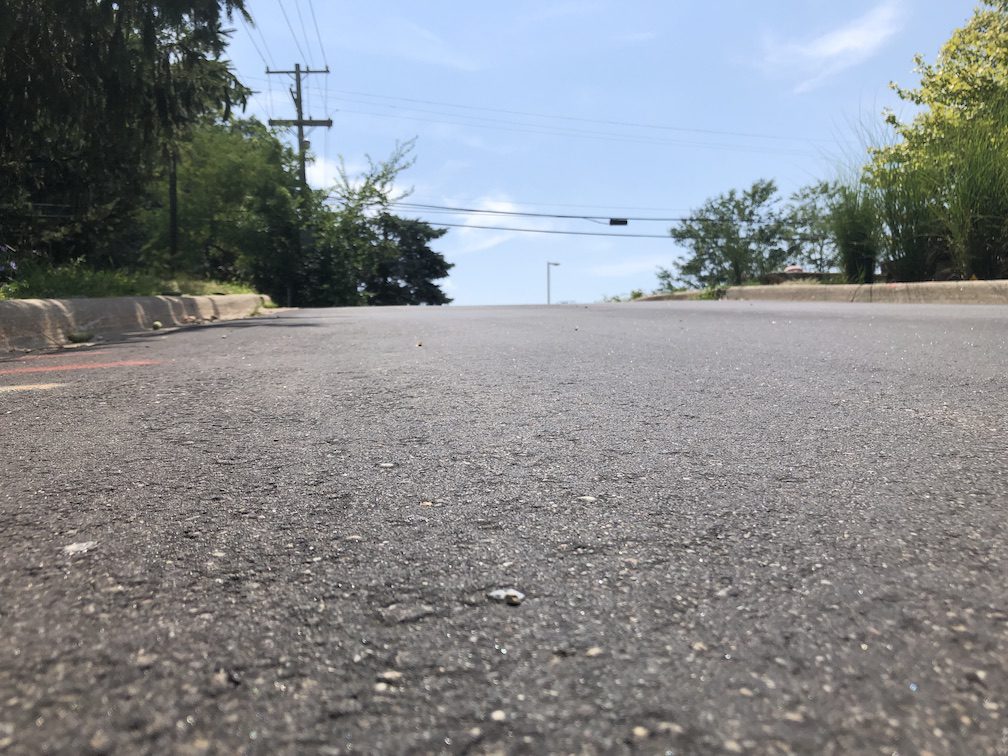
Last spring, an employee decided to replace their deck as the wood was getting old and falling apart. After much research they decided to go with a composite. That first summer they realized that the decking material gets super hot! Their small children were burning the bottoms of their feet while scurrying across to make it to the grass. The employee quickly ordered an outdoor rug for the deck, which was a great purchase and largely solved the problem.
Putting down a rug was a simple solution to a problem encountered at home, but what about when we’re away? That’s why we have shoes, you may say! But what about your dogs? While we might not have any idea how hot the ground beneath our shoes actually is, a dog doesn’t have that layer of protection!
We’re writing this short post as a reminder that some surfaces can become hot enough to burn your pet’s paws.
Asphalt, because of its color, absorbs a lot of the sun’s rays and therefore becomes much hotter—and is one of the worst offenders when it comes to burning feet/paws. Concrete can also get quite hot (although the lighter color doesn’t absorb as much light): on an 85 degree day, concrete can reach temperatures of 105 degrees. Asphalt, meanwhile, might reach a frightening 130 degrees!

Who doesn’t enjoy taking their dog to the lake? It’s a wonderful way to cool off, but don’t spoil your day by accidentally burning your feet and your dog’s paws on hot sand. When the sun is blazing, it may be more comfortable to keep to the grass or a shaded area.
Sometimes it’s better to just avoid the heat instead, and we suggest taking your pet for walks or other outdoor adventures in the morning or evening, when the weather is cooler and surface temperatures are more tolerable.
What to do if you think your pet’s paws are burned?
Unfortunately paw pad burns can be difficult to treat because the paw is in constant use. The paw is in contact with the ground which can lead to infection. We recommend bringing your pet in to the vet for a visit if you suspect a burn. Bandages and rest may be required, or antibiotics if the vet finds an infection.
Paw burns are easily preventable and awareness of weather conditions and a bit of planning can go a long way in keeping your pet healthy and happy on these hot summer days!
Recent Posts
About Us
Ann Arbor Animal Hospital is a locally-owned animal hospital operating for over 90 years in Ann Arbor, MI.
